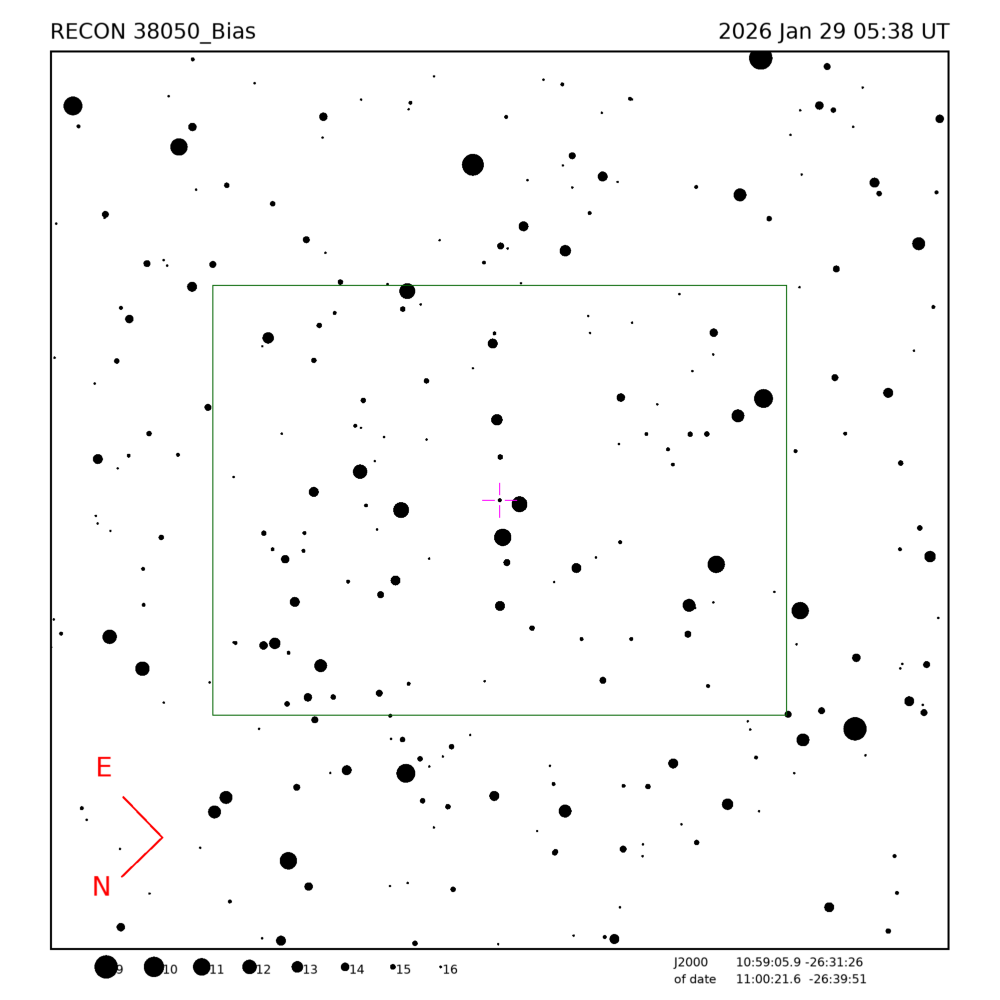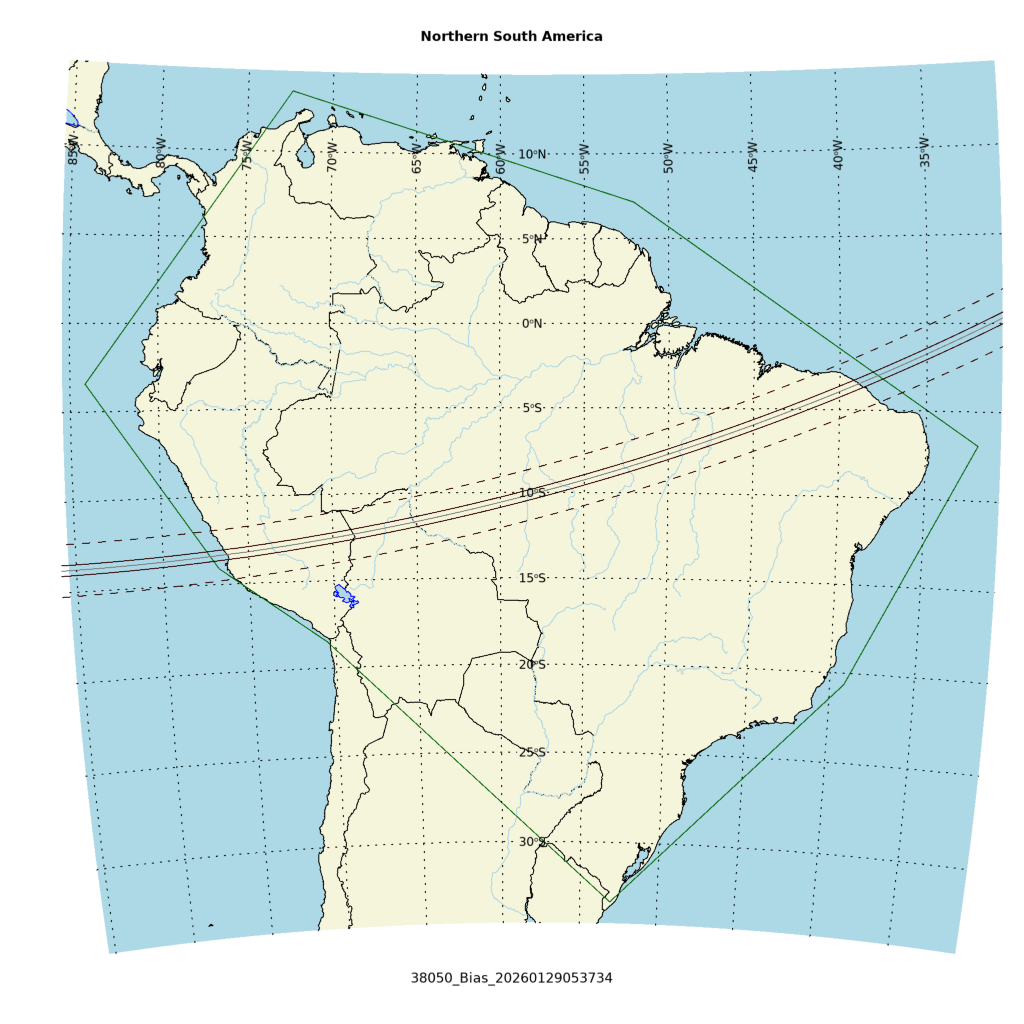
Occultation event with (38050) Bias, event index number 3184
Regions able to see the event: SAmericaN
Geocentric closest approach at 2026/01/29 05:37:34 UTC
J2000 position of star is 10:59:05.9 -26:31:26
Equinox of date position of star is 11:00:21.6 -26:39:51
Star is 99 degrees from the moon. Moon is 82% illuminated.
Stellar brightness G=15.8, apparent brightess of occulting body is G=15.2
Use an exposure time of 1.40 seconds with the standard RECON-QHY system.
SNR of 6.5 per integration for unocculted signal
Expected flux drop is 37% with SNR of 2.4 for the occulted depth (per occulted point)
Apparent velocity is 10.9 km/sec on the sky relative to the star, or, 11.8 arcsec/hr.
Position angle of asteroid motion is 70.8 degrees
The recommended exposure time corresponds to 15.3 km per image.
The 1-sigma error in the time of the event is 0.6 seconds.
The 1-sigma cross-track error in the shadow position is 40.4 km.
The sky-plane scale is 3328.9 km/arcsec.
Diameter estimates:
63.4 km assuming a 5% albedo, maximum of 5.8 sec for a central chord
25.9 km assuming a 30% albedo, maximum of 2.4 sec for a central chord
Cross-track diameter of 61.6 km used for deployment plan.
Star training set for 38050_Bias, (2026/01/29 05:38UT) Object RA Dec mag sep mel Spica 13:26:34.2 -11:17:48 1.0 37.64 124 4Gam Crv 12:17:09.1 -17:41:12 2.6 19.88 112 Chi1Hya 11:06:35.5 -27:26:05 4.9 1.59 101 PPM 258384 11:00:39.8 -26:54:32 7.8 0.25 99 38050_Bias 11:00:21.6 -26:39:51 15.2 100 Positions are for equinox of date


Star training set for 38050_Bias, (2026/01/29 05:38UT) Object RA Dec mag sep mel Spica 13:25:11.5 -11:09:41 1.0 37.64 124 4Gam Crv 12:15:48.1 -17:32:30 2.6 19.88 112 Chi1Hya 11:05:19.6 -27:17:37 4.9 1.59 101 PPM 258384 10:59:24.2 -26:46:07 7.8 0.25 99 38050_Bias 10:59:05.9 -26:31:26 15.2 99 Positions are for J2000